Cycling: a middle-class problem for woke wheelers or a working-class crisis for a growing sector of cycle couriers
How Tower Hamlets’ class-dominated conversation about cycling is drowning out a bigger crisis surrounding the working conditions of Whitechapel’s growing flock of cycle couriers.
If you keep up with the news, you’d be forgiven for thinking that cycling is exclusively a fashionable commuting choice for gentrifiers or your dad’s favourite excuse to wear lycra.
RideLondon, the capital’s annual festival of cycling, has been mocked by former Hackney councillor, Jon Burke, as a ‘middle-class jamboree’.
The response to Low Traffic Neighbourhood (LTN) schemes and plans for a ‘15-minute city’ where everything is designed to be within walking or cycling distance, has often pitted working people who rely on their cars against middle-class environmental campaigners such as George Monbiot or Extinction Rebellion.
The encouragement of cycling is not only seen as middle-class but as detrimental to working-class people. Steve McNamara, General Secretary of the Licensed Taxi Drivers’ Association, has framed car reduction measures in terms of a class war where ‘the working classes are losing badly’.
At the heart of this dispute seems to be an assumption that cycling is an exclusively middle-class leisure pursuit. In fact, no group spends more time cycling than working-class couriers for cargo bike delivery companies and food app delivery companies like Deliveroo, Uber Eats, and Just Eat.
Cycling couriers are a huge and burgeoning group of UK workers. Deliveroo alone provides work for more than 15,000 couriers in London. Though some use motorbikes and scooters, the majority use pedal bikes and e-bikes.
Zedify, a cargo bike delivery network with a hub in nearby Hoxton, has just secured £5 million in funding from Barclays, creating 120 living-wage jobs nationwide.
Like taxi drivers, the workplace of these delivery cyclists is the streets. Cycle couriers spend 20 to 40 hours a week on the road, and sometimes more. This means they are at far greater risk of injury or death than commuters or those who cycle for leisure.
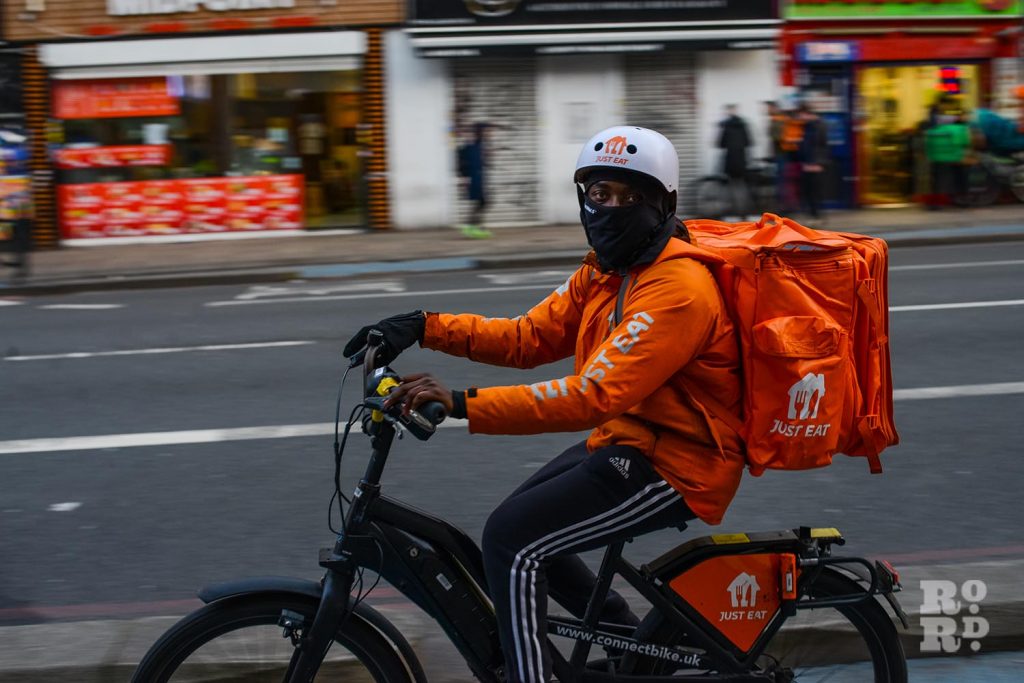
Speaking to food app delivery cyclists on Brick Lane, everyone felt safer on cycle pathways physically separated from traffic than on roads with no cycle lanes at all. Couriers spoke positively of the Cycle Superhighway 2 (CS2) on Whitechapel Road, and statistical evidence corroborates that the safest way to cycle is on a path segregated from traffic.
Tower Hamlets Mayor, Lutfur Rahman, promised in his manifesto to reopen all roads to cars and has begun reversing existing LTN and School Street schemes. He claims that LTN road restrictions are ‘moving congestion and pollution on to the most vulnerable residents [of the borough].’
His 2022 election campaign tapped into a perceived divide between wealthy gentrifying cyclists and working-class car drivers. Local residents campaigning against LTNs such as Mohammad Rakib consider these supposed wealthy cyclists as ‘urban colonialists’ who are pricing residents out of the borough and contributing to a form of ‘social cleansing’.
Critics such as Jane Harris from the campaign group Save Our Safer Streets accuse Rahman and Rakib of stoking a ‘culture war’ instead of considering the evidence.
The Equality Impact Assessment in April 2021 found that LTNs reduce injuries for all road users by around 70 per cent. A 2022 report commissioned by national cycling charity Sustrans found that LTNs also ‘reduce the overall number of car journeys taken’ and therefore improve air quality.
Cycle couriers are among the highest at risk of exposure to both air pollution and road accidents due to the hours they spend on the road every day for their work, breathing in exhaust fumes and weaving in and out of cars. They also tend to live in more deprived areas where average annual concentrations of NO2 are 13 per cent higher than in wealthier areas.
As workers, their interests in car-reduction infrastructure such as cycling superhighways and LTNs converge with those of middle-class residents and commuters rather than those of working-class car drivers.
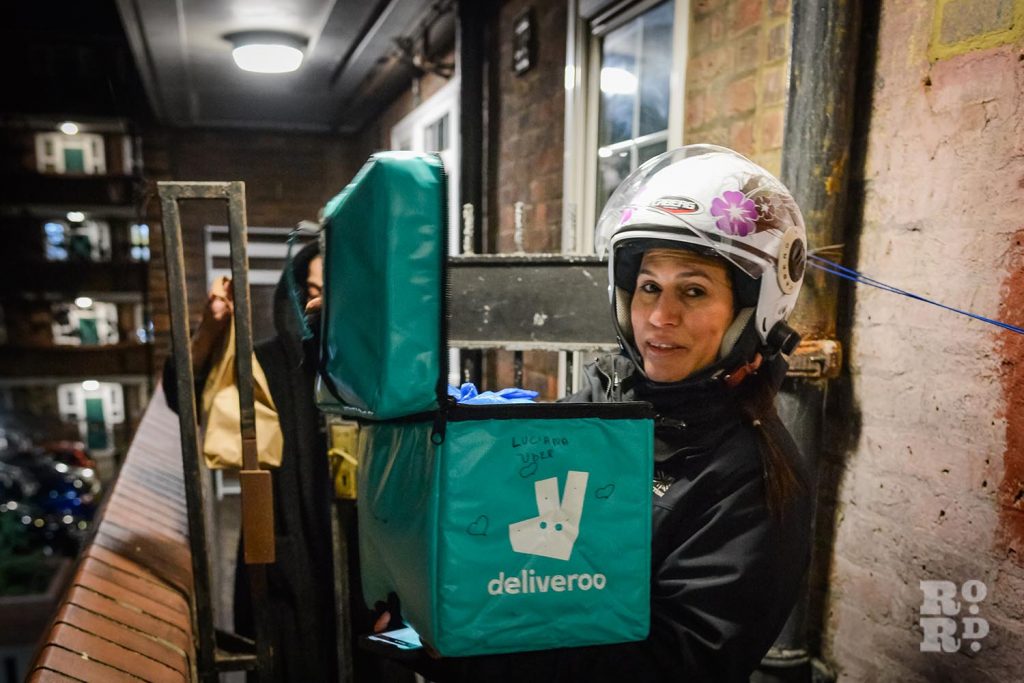
That’s not to say that louder middle-class voices should be allowed to drown out the specific concerns of delivery couriers.
Predominantly middle-class homeowners can afford to pay for bicycle storage for their own streets. But without access to safer locations, many cycle couriers have to store and charge their e-bikes indoors.
On Sunday 5 March, a fire caused by a Zoomo e-bike battery engulfed a three-bedroom apartment housing 18 people at Maddocks House in Shadwell. Tragically, one occupant, Mizanur Rahman, died of his injuries.
This is not an isolated incident. In March of this year, the London Fire Brigade issued a safety warning about “incredibly concerning” fires involving e-bikes in London, which they say has increased year-on-year by 80 per cent.
This underlines that to comprehensively address cycling safety in the borough, we need to consider wider factors such as in-work poverty, overcrowded housing, and a lack of easy-to-access council-provided cycle storage solutions.
But it’s not just the Council that is ignoring the welfare of cycle couriers. The Tower Hamlets Walking and Cycling Index 2021, commissioned by Sustrans, makes no mention of food app delivery couriers or their specific safety concerns.
The cycling culture war speaks to legitimate frustrations at the wider inequalities of Tower Hamlets’ life, but we should not let it cloud our judgment on cycling.
The safer streets that LTN campaigners are fighting for would be a welcome improvement to the working conditions of delivery cyclists. And it must not stop there.
Food app delivery couriers have some of the worst living and working conditions in the borough, and they are not sufficiently empowered to speak up about their conditions. Local and national bodies with influence over cycling policy must redirect their attention towards helping these vulnerable workers.
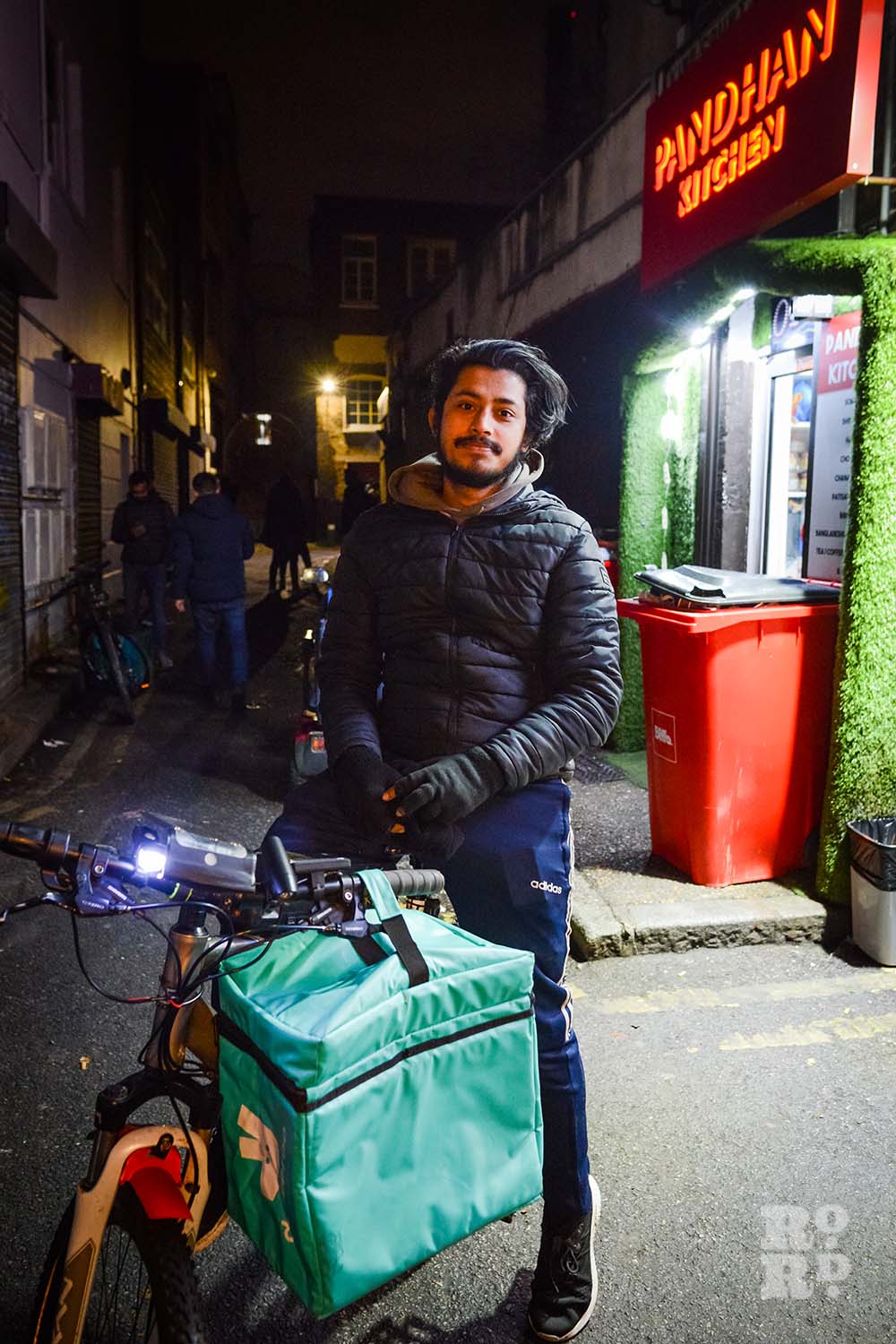
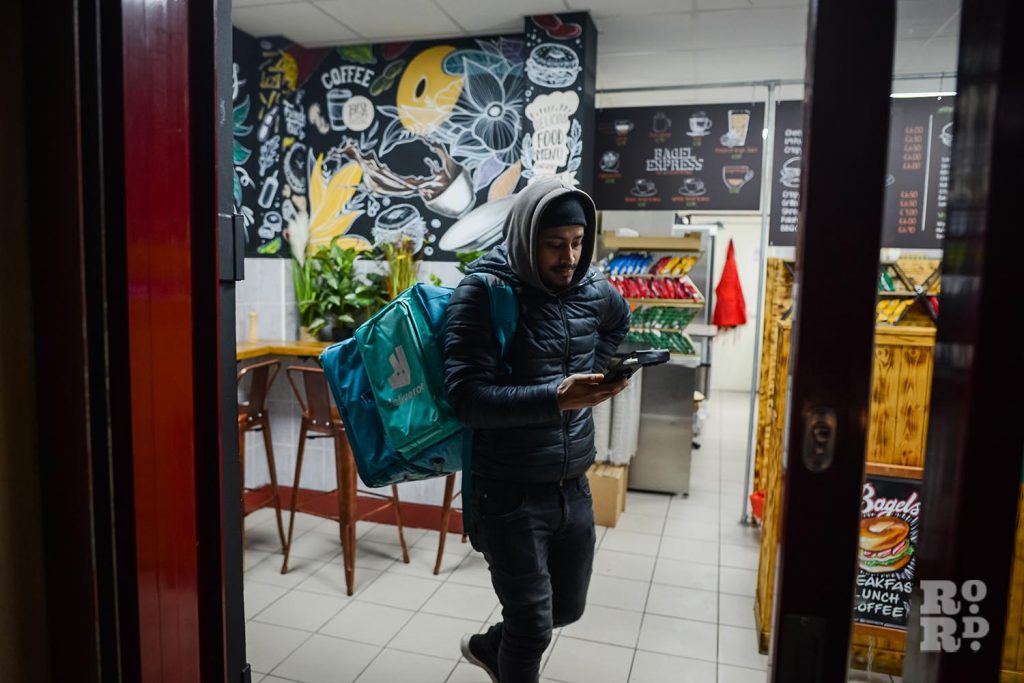
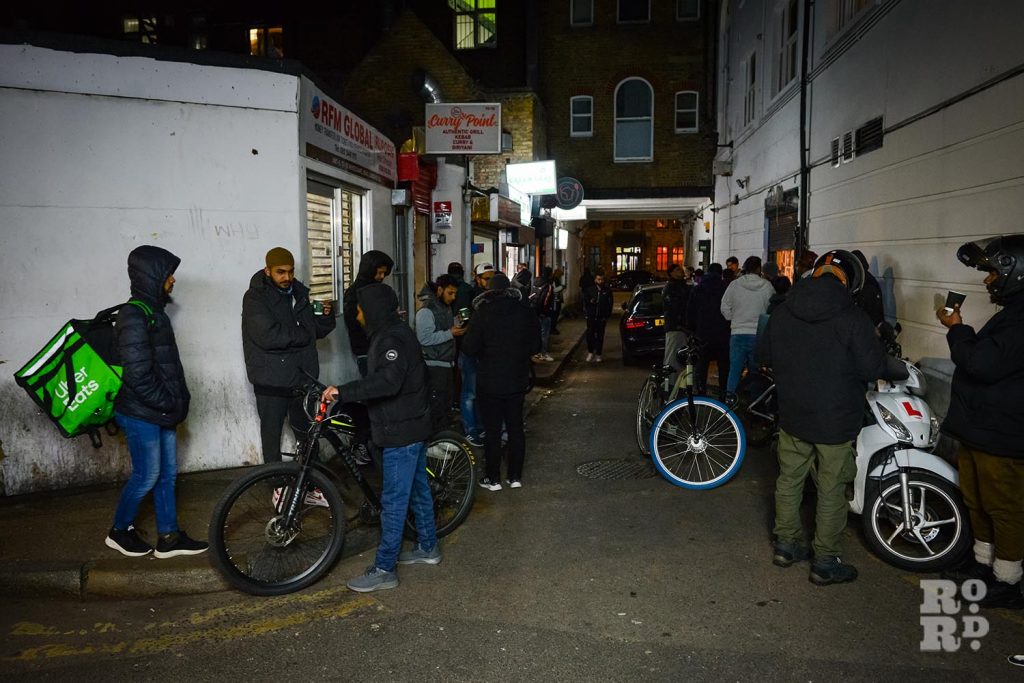
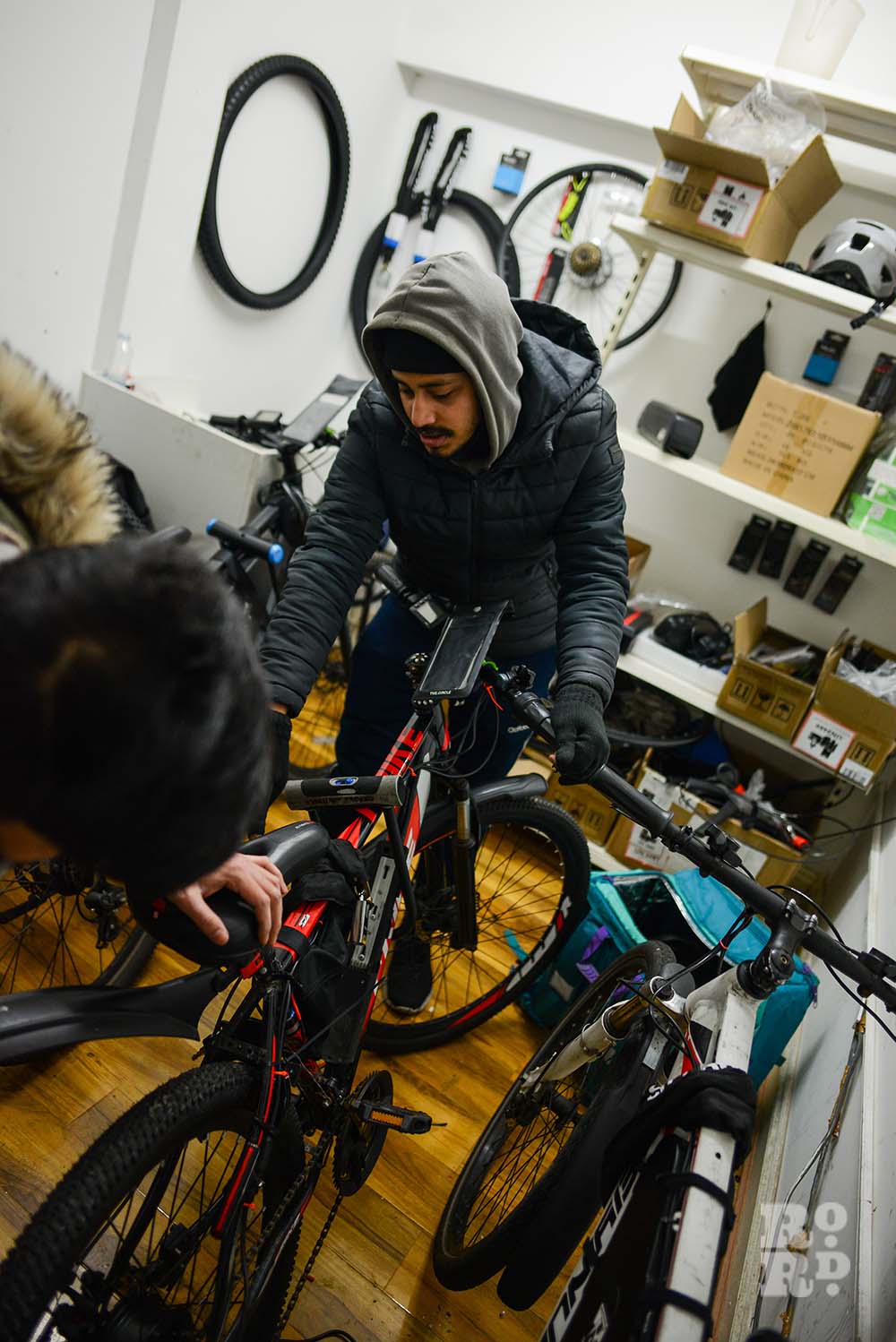
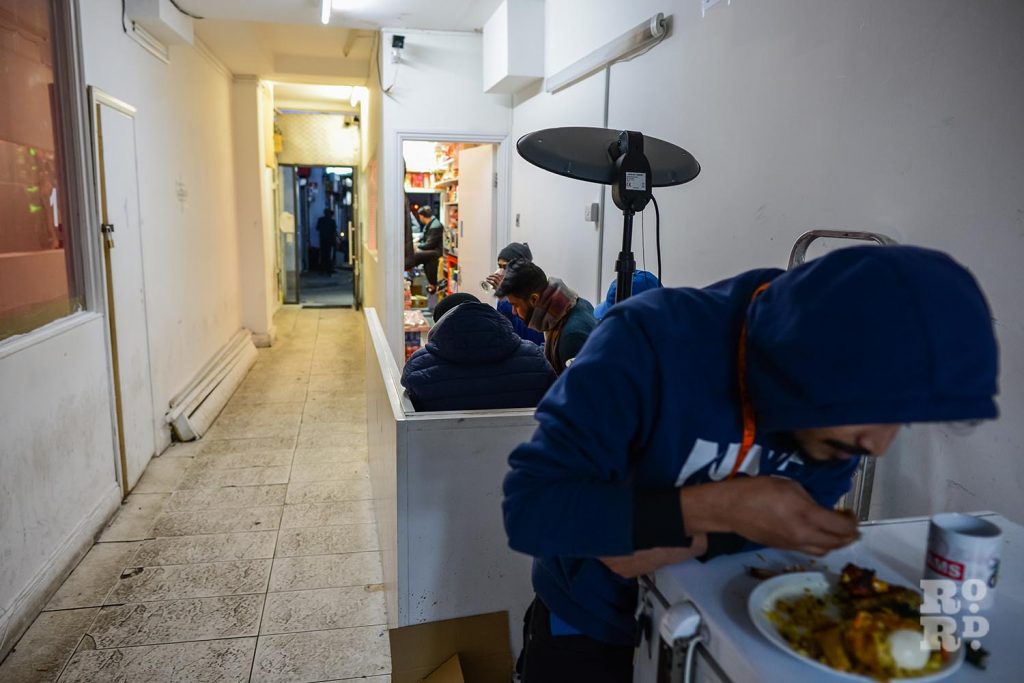
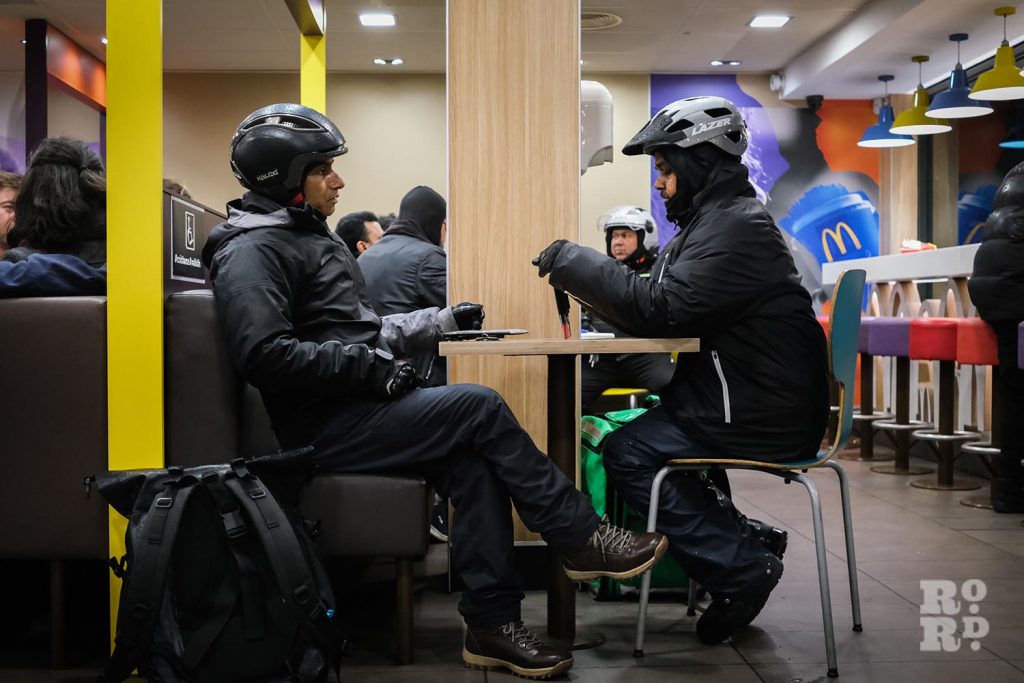
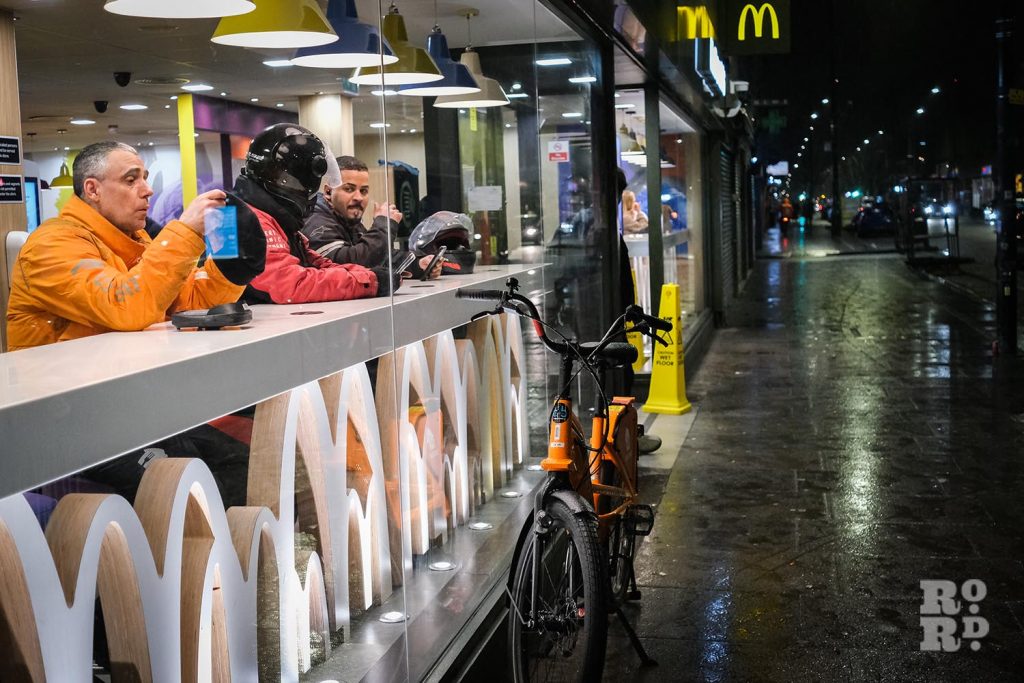

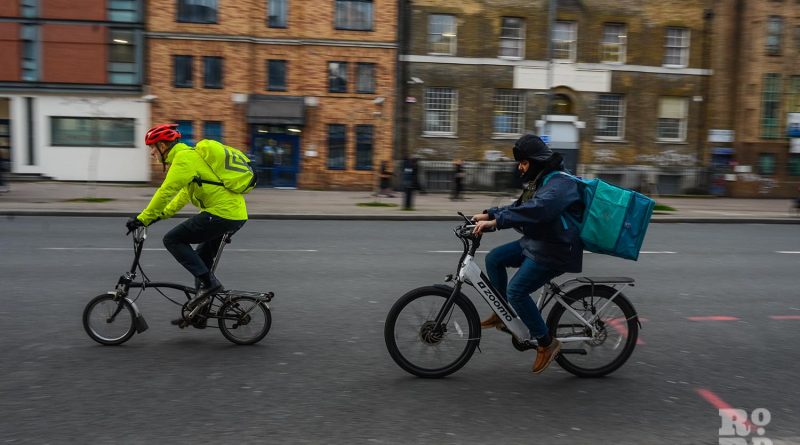
I lived in Roman Road as a kid, 1940’s thru to 1960s. My dad refused to allow me have a bike, citing the dangers of London roads, and alas an accident outside our home underscored his attitude when a kid cyclist wobbled in front of a bus and ended up trapped and killed under a front wheel. The road was blocked for well over an hour, and someone had to inform the rider’s parents. Regardless of law, regardless of opinion, simple facts are that London roads are old and overused and big heavy vehicles like buses and trucks will always win in an argument with cyclists. As an ex-biker I later learned that it doesn’t matter who is right or wrong when the risk is that you might die if you’re just plain stupid. London roads are not for cyclists, but if you intend to ride then just use some common sense.
This is really interesting insight into couriers tough working conditions and what they need from the council and others, thanks.
It’s a real shame though that it’s needlessly framed by culture wars myths about how cyclists are wealthy vs working class car owners. This just isn’t true in our borough.
Owning a car in London costs an average of £3,000 a year while getting a second hand bike is the cheapest way to get around – and if only for that reason you see all sorts of ages and social groups cycling around the borough. Tower Hamlets is one of the most deprived boroughs and also has one of the lowest car ownership rates in London, which is not a coincidence. The majority of Tower Hamlets residents do not have access to a car or van, and those that do are more likely to be homeowners. Car ownership is lower among more disadvantaged or poorer groups (of course it is, it’s bloody expensive) – source below.
Car owners are a relatively wealthy group, and a minority in our borough, and they are using their louder voices to shout over others by peddling the lie that car owners are poor working class people and cyclists are all loaded gentrifiers. The majority of residents don’t agree with them and support liveable streets – particularly schools, headteachers and young families/children who they are most designed to benefit. As well as public health professionals who know what it is doing to our health, particularly to the poorest children, to have anyone who can afford to run a car drive and poplute and idle wherever they want.
Of course there is a problem with posh lycra clad leisure cyclists, with all the expensive gear, behaving obnoxiously and putting other people off cycling – I definitely have found that as a young woman new to cycling. But that’s not most cyclists (again just the loudest ones) and the answer is not to make it so that cycling is only safe for people like them and a scarier and scarier thing to do if you are a kid going to school, a mum going to the shops, an older person who can’t afford to run a car any more, or any of the others who can’t afford to run an expensive car.
Source for car access stats in Tower Hamlets: https://www.google.com/url?sa=t&source=web&rct=j&url=https://www.towerhamlets.gov.uk/Documents/Borough_statistics/Research-briefings/BoroughProfileTransport.pptx&ved=2ahUKEwiZzaXf3-f-AhXfQEEAHVEHC3oQFnoECBMQAQ&usg=AOvVaw0XELgmsintr8rBj0G_x0Qu